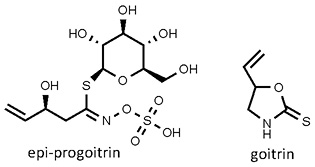 Crambe maritima
Crambe maritima
seakale • sea kale
Crambe maritima L. (Brassicaceae); seekool (Afrikaans); chou marin (French); Meerkohl (German)
DESCRIPTION The edible parts are the etiolated (blanched) leaf stalks, together with the unfolded young leaf blades and flower stalks (about 20 cm or 8 in. in length).
THE PLANT A leafy perennial herb with large, glaucous, collard-like leaves, robust flowering stalks, attractive white flowers and spherical, indehiscent, single-seeded fruits. Both Crambe hispanica and C. hispanica subsp. abyssinica (formerly known as C. abyssinica) are sources of industrial oil obtained from cold-pressed seeds.1
ORIGIN Seakale occurs naturally along the sea coasts of western Europe and part of western Asia (North Atlantic to the Black Sea).1 It is a traditional food plant in Scotland and England. Local people used to heap up loose shingle around the root crowns in spring, thus bleaching the young shoots as they emerge. It is the only indigenous commercial vegetable and is produced mainly in Kent and Lincolnshire.1 Cultivation started in the 18th century and reached a peak of popularity in the early 19th century. Seakale is commonly grown as an ornamental plant in botanical gardens in Europe and is often seen in herb gardens.
CULTIVATION Seakale is a halophyte and therefore tolerant of saline conditions. It is easily grown from seeds, root cuttings (taken in winter) or by division (in spring). A deep, rich sandy soil is ideal. In early spring, the plants are covered with special forcing pots to blanch them (by excluding sunlight). Blanching (forcing) is traditionally achieved by covering the crowns with sand or gravel but black polythene are nowadays often used.
HARVESTING The white or pale yellow (sometimes reddish) etiolated leaves or flowering stalks are cut off before they unfold. The product is similar to broccoli in appearance but should be used as soon as possible after harvesting.
CULINARY USES Seakale is not really a culinary herb but rather a vegetable, boiled or steamed and eaten like asparagus. It may be dipped in melted butter and eaten with salt and pepper or served with a béchamel sauce.2,3 Alternatively, the vegetable may be enjoyed fresh as salad, served with vinaigrette or it may be sautéed with garlic.2 The flavour is described as nut-like and slightly bitter.
FLAVOUR COMPOUNDS The bitter taste is ascribed to the presence of glucosinolates, at a level of 5.4 to 7.3 μmol per g fresh weight.4 Epi-progoitrin has been identified as the main compound, representing more than 80% of total glucosinolates.4 Enzymatic breakdown products include goitrin and other isothiocynates known to reduce the production of thyroid hormones. However, studies have shown that these compounds, when part of a normal and balanced diet, have no harmful effect, possibly due to the inactivation of the specific glucosinolate-degrading enzyme, myrosinase, during cooking.5

NOTES Seakale contains 0.18% vitamin C.3
1. Mabberley, D.J. 2008. Mabberley’s plant-book (3rd ed.). Cambridge University Press, Cambridge.
2. Larousse. 1999. The concise Larousse gastronomique. Hamlyn, London.
3. Harborne, J.B., Baxter, H. 2001. Chemical dictionary of economic plants. Wiley, New York.
4. Quinsac, A., Charrier, A., Ribaillier, D., Péron, J.-Y. 1994. Glucosinolates in etiolated sprouts of sea-kale (Crambe maritima L.). Journal of the Science of Food and Agriculture 65: 201–207.
5. McMillan, M., Spinks, E.A., Fenwick, G.R., 1986. Preliminary observations on the effect of dietary brussel sprouts on thyroid function. Human Toxicology 5: 15–19.